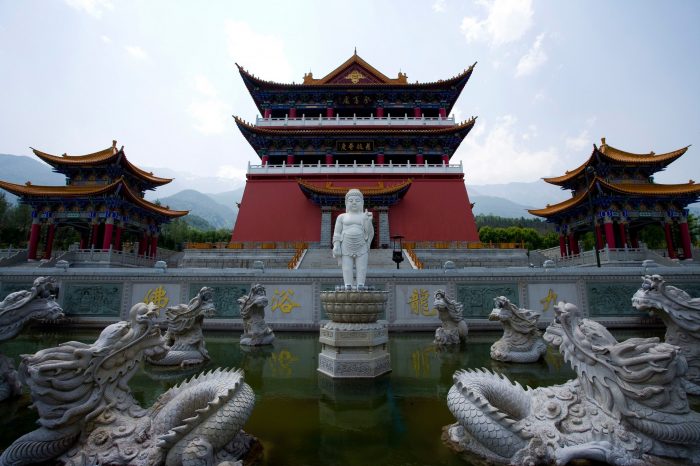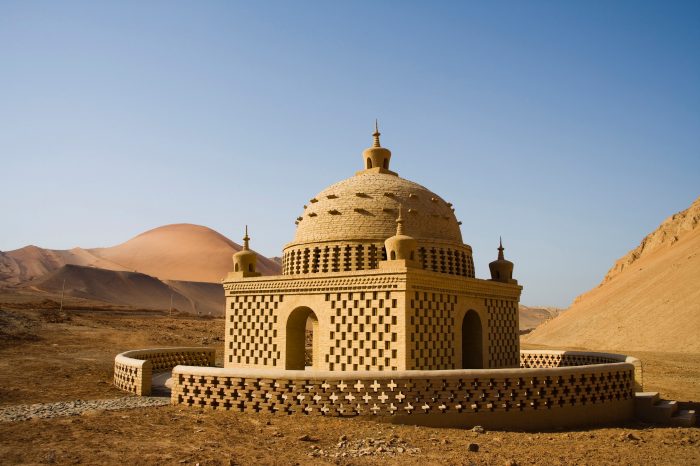More Information
[email protected]
+86 28 8503 0959
Mon - Fri 9.00 - 18.00
China crossing: Nepal – China – Laos
Keywords: drive to china, driving into china
Day 01 Nepal/Zhangmu 30km, 2400m
In the morning entry through Nepal-China Friendship Bridge to Zhangmu. To process all formalities in Zhangmu and in the afternoon to apply for special permit for EBC.
Day 02 Zhangmu-Nielamu-Shegar 210km, 4200m
Drive via Nyalam to Tingri. Along the way you experience giandiose mountain community of Xixiabangma (8012M).
Day 03 Shegar-EBC-Tingri 360km, 4200m
Drive to Rongbuk Monastery and visit Everest Base Camp. With 5,100 meters of altitude, the monastery is the highest on earth. From here you get a great view of Mt Everest. Mt Everest, called Mount Qomolangma in Tibetan language, is the highest peak on earth and probably the most coveted mountain in the eyes of adventurous travelers. Travel to Mt Everest Base Camp is both a physical and psychological challenge for you, but it will definitely reward you with the incomparable view – a panorama of Himalayan peaks, and never forget, good memories – if with good weather. In the afternoon drive to Tingri.
Day 04 Tingri-Lhatse-Sakya-Shigatse 274km, 3880m
Drive to Sigatse via Lhatse and Sakya. The Sakya Monastery is the main monastery of the Sakya sect of Tibetan Buddhism. Then drive to Shigatse, the second largest city in Tibet.
Day 05 Shigatse-Gyantse 93km, 4040m
In the morning visit the monastery Taishilunpo in Shigatse. Tashilhunpo is one of the six great Gelugpa institutions, along with Drepung, Sera and Ganden Monasteries in Lhasa, and Kunbum and Labrang in Amdo. Also it’s the seat of an important lineage: the Panchen (“great scholar”) Lamas. It is a real pleasure to explore the busy cobbled lanes twisting around the aged building.
Then visit the Shalu Monastery. In the Shalu Monastery can find also extensive, delicate murals, which are among the rare and valuable work of art of Tibet.
Go on drive to Gyantse and visit the visit the Pelkhor Chode Monastery and Dzong (fortress of Gyantse). The Monastery founded in 1418, once encircled 15 monasteries from three different orders of Tibetan Buddhism. It has four floors with 108 bands and over 10,000 murals. And Gyantse Dzong towers above Gyantse on a finlike outcrop, and has outstanding views of the Pelkhor Chode Monastery and surrounding valley.
Day 06 Gyantse-Yamdrok Lake-Lhasa 259km, 3650m
Enjoy the breathtaking mountain scenery on the road from Gyantse to Lhasa via Yamdrok. A long time drive with multiple Pass to cross. At the highest point of the route (Karo La Pass of 5010m) you will see the glaciers of Noejin Kangsa (7223m). Stop for taking photo at the third-largest holy lake Yamdrok. Aslo can take a slowly walk beside the lake. Then go on drive to get to the holy city of Lhasa. Walk on the square in front of the Potala Palace if interested.
Day 07 Lhasa 3650m
Day trip visiting of the Potala Palace, Jokhang Temple and scroll around in Barkhor Street;
The Potala: Lhasa’s cardinal landmark, the Potala is one of the great wonders of world architecture. It’s a structure of massive proportions, an awe-inspring place to visit.
The Jokhang: It is the most revered religious structure in Tibet. Thick with the smell of yak butter, the murmur of mantras and the shuffling of wide-eyed pilgrims, the Jokhang is an unrivalled Tibetan experience and couldn’t miss.
At last stroll around in Barkhor Street.
Day 08 Lhasa 3650m
Day trip in Lhasa of:
Drepung Monastery: About 8km west of central Lhasa, Drepung was once one of the world’s largest monasteries.
Sera Monastery: about 5km north of central Lhasa. It was one of Lhasa’s two great Gelugpa monasteries, second only to Drepung. It’s worth a visit, also you have chance to experience the debating, it is usually held in the monastery’s debating courtyard between 3pm and 5pm (not weekends).
Norbulinka: it’s in the western part of town and was the summer palace of the Dalai Lamas.
Day 09 Lhasa-Damxung-Namtso 223km, 4500m
Drive via Damxung to Namtso See. It is the largest lake in Tibet, the highest large lake in the world and the second largest saltwater lake in China. Stay overnight here.
Day 10 Namtso-Nagqu-Anduo 363km, 4700m
Drive to Anduo via Nagqu (4500m), and enjoy the spectacular Qinghai-Tibet highland viewing along the road.
Day 11 Anduo-Tuotuohe 279km, 4500m
Drive to Tuotuohe and and enjoy the spectacular Qinghai-Tibet highland viewing along the road.
Day 12 Tuotuohe-Golmud 413km, 2819m
Drive to Golmud, and enjoy the spectacular Qinghai-Tibet highland viewing along the road.
Day 13 Golmud-Dulan 347km, 3000m
Drive to Dulan, and enjoy on the road.
Day 14 Dulan-Chaka Saltlake-Koko Nor Lake 218km, 3200m
Drive via Salt Lake Chaka of Qinghai province.
Day 15 Koko Nor See-Huangzhong-Xining 132km, 2295m
Drive to Huangzhong. And visit the Kumbum (Ta’er Monastery). The Kumbum Monastery is one of the great monasteries of Gelugpa (Yellow Hat) sect of Tibetan Buddhist, and it was built in 1577 of Ming Dynasty on hallowed ground- the birthplace of Tsongkhapa, founder of the Gelugpa sect.
Then go on drive Xining. Xining was one of the major hubs along the northern Silk Road, and also an important starting place. In Xining, you can visit the local market Shuijing Xiang. The largest market of Xining extends over several streets and is the perfect place to look, or taste some local food.
Day 16 Xining-Jianzha-Tongren 167km, 2500m
Drive via Jianzha to Tongren. In Jianzha there is an opportunity boating on the lake called Lijiangxia of the Yellow River. You can also visit the Kanbula National Forest Park with the landscape of red, and the famous ancient monasteries in Sanstein Namdzog besichitigen valley.
Further drive to Tongren. Tongre is an amiable (but growing) monastery town of Tibetan monks and Hui shop owners, both of whom cater to thevalley’s many monasteries. For several centuries now, the villages outside town have been famous for producing some of the Tibetan world’s best thangkas (Tibetan sacred art) and painted statues, so much so that an entire school of Tibetan art is named after the town. Like Wutun monastery, here you have chance to meet the artists, and also have chance to purchase a painting or two, fresh off the easel. There are several options for visiting: Gomar Gompa, Rongwo Gonchen Gompa etc.
Day 17 Tongren-Xiahe 122km, 3000m
Drive to Xiahe. Visit the Labrang Monastery. This monastery was founded in 1709. At its peak the monastery housed nearly 4,000 monks. In addition to the chapels, residences and living quarters for the monks, Labrang is also home to six tratsang (monastic colleges or institutes), covering esoteric Buddhism, theology, medicine astrology and law.
Day 18 Xiahe-Langmusi 184km, 3200m
Drive to Langmusi, visit the monastery Langmusi on both sides of the border between Sichuan and Gansu.
Day 19 Langmusi-Zöige-Hongyuan 218km, 3500m
Drive to Zöige. While the town’s Chinese name is Ruo’ergai, it’s most commonly known by its Tibetan name Zögie. At the northeastern edge of town is Ta Tsa Gmpa (Dazha si), a Tibetan temple with pleasant, peaceful grounds. Drive to Hongyuan. This route is an increasingly popular route to the province of Sichuan. Even if you do not plan to continue north on the Gansu border, this area offers the opportunity to learn about remote Tibetan villages and counties.
Day 20 Hongyuan-Wenchuan-Dujiangyan 362km, 800m
Drive to Wenchuan. Along the way you see the ruins of large earthquake on May 12, 2008. And go on drive to Dujiangyan irrigation project for visiting. It was built 220 BC, and work till today with annual maintaining, even after the heavily earthquake in 2008.
Day 21 Dujiangyan-Chengdu 64km, 505m
Drive to Chengdu. Visit in Chengdu city after arrival. Options:
Tianfu Square: A statue of Mao warmly welcomes you here.
The people’s park: A visit to the teahouse of the local park provides an ideal opportunity to know the lifestyle of Chengdu.
And invitation from our team for dinner. Sichuan cuisine is one of the four best cuisines of China. And if interested in, enjoy the Sichuan Opera with mysterious Face changing after dinner.
Day 22 Chengdu 30km, 505m
Day trip of Chengdu city, options:
Panda Breeding Base: in the north of Chengdu city. There you can learn about the endangered species- Giant Pandas how to live in their natural habitat.
Qingyang Gong: Qingyang Temple originally was built in Tang dynasty (618-907), experienced many wars it was destroyed many time also and the building reserved now was built in Qing dynasty (1644-1911). And relax and enjoy in the tea houses in this temple just like the local people.
Day 23 Chengdu-Leshan-Emeishan 155km, 551m
In the morning drive to the Giant Buddha in Leshan: With a height of 71 meters is the world tallest sitting statue of Buddha. Not only the immense size of the statue carved from the rock impressed, but also that it dates from the Tang period, so there has been more than 1,200 years. Also take a boating trip on the Min River.
Then drive to Emei Mt (3,099 m) and visit. It is one of famous four Buddhist mountains of China. Visit the Baoguo Temple at the foot of Mt. Emei. With the Giant Buddha of Leshan, they are on the list of UNESCO World Cultural and Natural Heritage in 1996.
Day 24 Emeishan 551m-3099m
In the morning take a mini bus to Leidongping paking. Here you can decide if you take a cable car or take a hike up to the top of Emeishan-Golden Summit. If by walk will takes you about 2 to 3 hours. And by the cable car will takes just 5 minutes. Visit around on the top and back in the afternoon by minibus again to the foot of Mount Emeishan.
Day 25 Emeishan-Zhaotong 459km, 1310m
Full day driving on road to Zhaotong, cross into Yunnan province and enjoy along the road.
Day 26 Zhaotong-Kunming 340km, 1895m
Drive to Kunming, the capital city of Yunnan province and enjoy along the road.
Day 27 Kunming 1895m
City tour in Kunming. In the morning visit the local flower and bird market, and then visit the Temple Yuantong.
Day 28 Kunming-Dali 328km, 1976m
Drive from Kunmign to Dali. And Visit after arrival. Options:
Around Er’hai: Erhai has the area of 249 square kilometers and surrounding by group of mountains. Enjoy the scenic viewing.
The Three Pagodas: it’s the symbol of the town. About 2km north of the north gate of Dali ancient town;
And walk around in the ancient Dali Town.
Day 29 Dali-Shaxi-Lijiang 224km, 2400m
Drive to Lijiang via Shaxi County. Shaxi once a crucial node on one of the old tea-horse roads (more like “caravan routes“) that stretched from Yunnan to Tibet, Nepal, Burma, Laos, Vietnam and parts of China. The “Friday market“ is the only one with a surviving market now. Then go on drive to get to Lijiang.
Day 30 Lijiang 2400m
Sightseeings around in Lijiang, Options:
Black Dragon Pool Park: On the northern edge of Lijiang is the Black Dragon Pool Park. Its view of Yulong Xueshan (Jade Dragon Snow Mountain of 5,596 m) is the most obligatory photo shoot in south-western China.
And also strolling in Lijiang Ancient Town, which was on the list of World Heritage in 1997.
Day 31 Lijiang 2400m
Sightseeings around in Lijiang, options:
In the morning go for visiting Yulong Xueshan. Also known as Mt Satseto, it soars to 5,590m and famous as one of the main scenic spots here. Getting to Yak Meadow (Maoniu-Ping) by scenic minibus. Its altitude is between 3,550 to 3,800m, and lives Tibetan and Naxi minorities here. It’s also a good eyeshot to view the majestic range of Mt. Yulong Xueshan. You can walk on the wooden path of mountain road for around 2hrs, then back to the parking by minibus again.
After that, drive to Baisha Village, famous for the Baisha Fresco which was made in the Ming Dynasty (1368-1644), compare with other religion mural, the features of such mural here are rich and varied. It’s combined the different religion culture like Buddhism, Taoist and Lamaism; gather into different article type nationality of Naxi, Tibet, Bai and Han; also show the historic cultural meaning.
Day 32 Lijiang-Yunxian 412km, 1107m
Drive to Yunxian and enjoy along the road.
Day 33 Yunxian-Puer 383km, 800m
Drive to Pu’er and enjoy along the road.
Day 34 Puer-Jinghong 129km
Drive to Jinghong from Pu’er and enjoy along the road. Jinghong, the “City of Dawn” in the local Dai language, is the capital of Xishuangbanna Prefecture. But it’s still an overgrown, drowsy Mekong River jungle town as much as a city. Visit in Jinghong after arrival if time permits and you’re interested in. or, just relax here.
Day 35 Jinghong/Laos
Deal with all the process, then exit from China to Laos.
All information of this journey on above is based on our knowledge and experiences. For the correctness and completeness cannot be 100% guaranteed.
-
DepartureZhangmu
-
Departure Timeconfirmed with travel advisor
-
Return Timeconfirmed with travel advisor
Similar Tours

China crossing: Laos – China – Mongolia
Cross china from south to north, china overland self drive tour, self drive through china, cross china with your vehicle, driving/riding to china

China Crossing: Kyrgyzstan – China – Shipping
drive into china then ship to next destination, drive to china.






